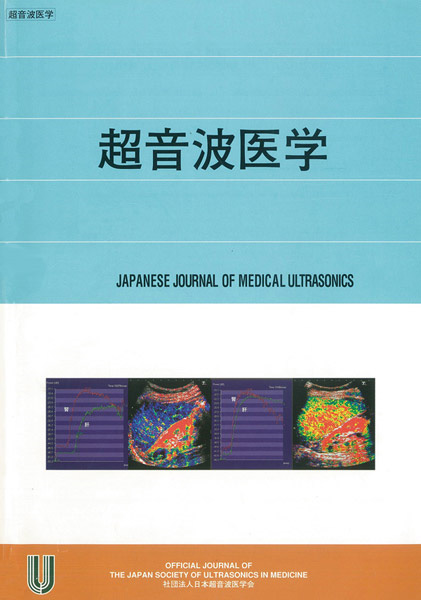Volume 44, Issue 3
Displaying 1-12 of 12 articles from this issue
- |<
- <
- 1
- >
- >|
REVIEW ARTICLES
-
Article type: REVIEW ARTICLE
2017Volume 44Issue 3 Pages 229-233
Published: 2017
Released on J-STAGE: May 15, 2017
Advance online publication: April 10, 2017Download PDF (1443K) -
Article type: REVIEW ARTICLE
2017Volume 44Issue 3 Pages 235-244
Published: 2017
Released on J-STAGE: May 15, 2017
Advance online publication: April 21, 2017Download PDF (7720K) -
Article type: REVIEW ARTICLE
2017Volume 44Issue 3 Pages 245-251
Published: 2017
Released on J-STAGE: May 15, 2017
Advance online publication: April 06, 2017Download PDF (1430K) -
Article type: REVIEW ARTICLE
2017Volume 44Issue 3 Pages 253-259
Published: 2017
Released on J-STAGE: May 15, 2017
Advance online publication: March 13, 2017Download PDF (1522K) -
Article type: REVIEW ARTICLE
2017Volume 44Issue 3 Pages 261-269
Published: 2017
Released on J-STAGE: May 15, 2017
Advance online publication: April 21, 2017Download PDF (1620K)
TUTORIAL
-
Article type: TUTORIAL
2017Volume 44Issue 3 Pages 271-273
Published: 2017
Released on J-STAGE: May 15, 2017
Advance online publication: April 28, 2017Download PDF (872K)
ORIGINAL ARTICLE
-
Article type: ORIGINAL ARTICLE
2017Volume 44Issue 3 Pages 275-285
Published: 2017
Released on J-STAGE: May 15, 2017
Advance online publication: March 24, 2017Download PDF (1620K)
CASE REPORTS
-
Article type: CASE REPORT
2017Volume 44Issue 3 Pages 283-287
Published: 2017
Released on J-STAGE: May 15, 2017
Advance online publication: March 13, 2017Download PDF (1452K) -
Article type: CASE REPORT
2017Volume 44Issue 3 Pages 289-293
Published: 2017
Released on J-STAGE: May 15, 2017
Advance online publication: April 06, 2017Download PDF (1617K) -
Article type: CASE REPORT
2017Volume 44Issue 3 Pages 295-299
Published: 2017
Released on J-STAGE: May 15, 2017
Advance online publication: April 28, 2017Download PDF (1292K)
ULTRASOUND IMAGE OF THE MONTH
-
Article type: ULTRASOUND IMAGE OF THE MONTH
2017Volume 44Issue 3 Pages 301-302
Published: 2017
Released on J-STAGE: May 15, 2017
Advance online publication: March 27, 2017Download PDF (1084K) -
Article type: ULTRASOUND IMAGE OF THE MONTH
2017Volume 44Issue 3 Pages 303-304
Published: 2017
Released on J-STAGE: May 15, 2017
Advance online publication: April 14, 2017Download PDF (850K)
- |<
- <
- 1
- >
- >|
